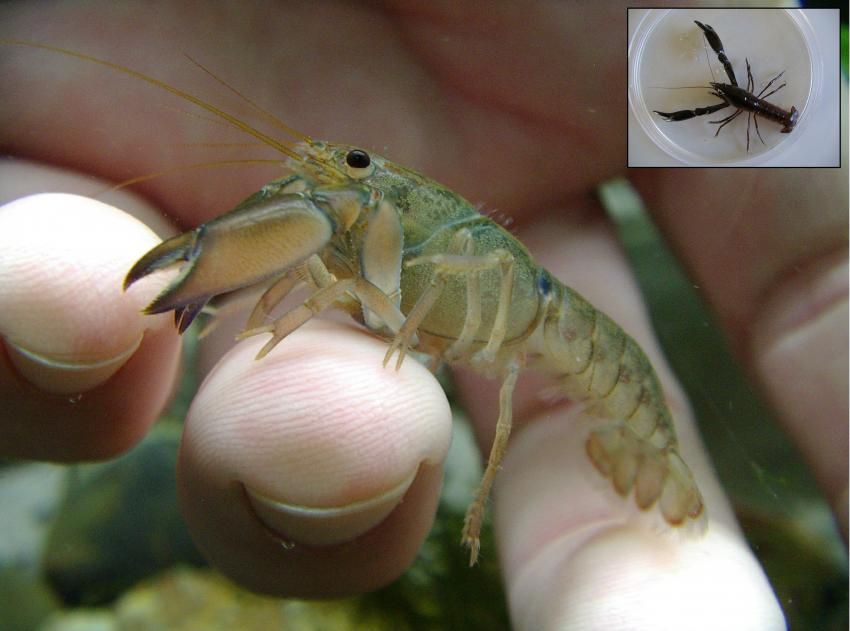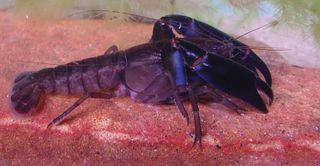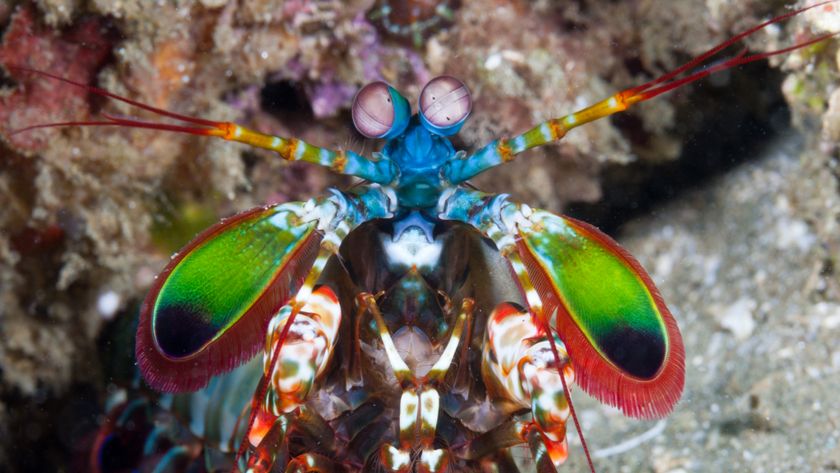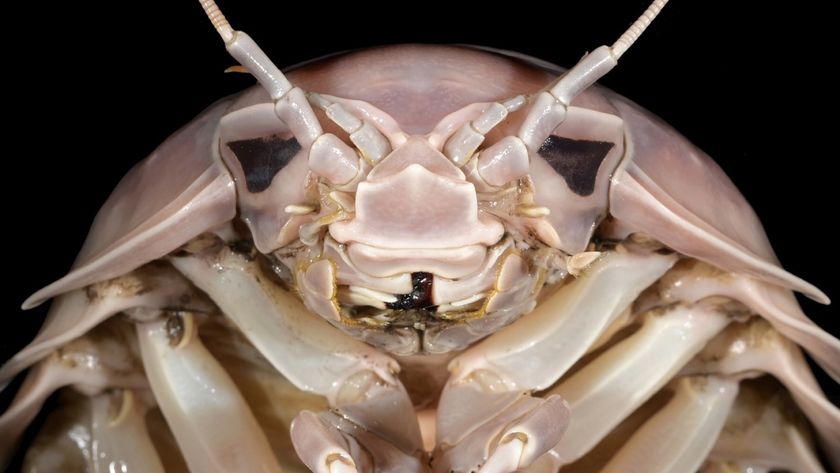Adorably Tiny Crayfish Discovered (and It's a Cannibal)

A new species of crayfish discovered in southeast Australia's coastal lakes and swamps is one of the world's smallest crayfish species, researchers report.
The tiny, blue-black crustacean resembles its larger cousins that end up in cooking pots, such as lobsters and crawdads. But this species, which locals call a lake yabby, measures only 0.5 to 0.7 inches (12 to 18 millimeters) long. The biggest one found was just 0.8 inches (21 mm) long, and weighed 0.2 ounces (7 grams).
Despite its small size, the yabby is a powerful burrower, riddling its swampy habitat with burrows up to 3 feet (1 meter) deep. The burrows reach down to the shallow water table, and help the crayfish survive dry stretches — Australia's coastal swamps regularly drain and dry up, then flood with up to 5 feet (1.5 m) of water. Thick grasses and reeds in the swamps and lakes provide protection for the petite crayfish, which is prey for eels, birds, fish, lizards and turtles.
The freshwater species was named Gramastacus lacus, which refers to its favored habitat in ephemeral waterways such as Wallis Lake, Wamberal Lagoon and Myall Lake, which periodically flood and dry, reports Robert McCormack, a lead biologist with the Australian Crayfish Project. McCormack described the new species in a report published April 4 in the journal ZooKeys.
In his report, McCormack also suggested replacing the common name of lake yabby with eastern swamp crayfish instead.
Males of the new species grow bigger than females, but both sexes have long claws called chelae that they wave in defense when menaced by other crayfish or predators (these crayfish are cannibals). [Photos: The World's Freakiest Looking Animals]

Because of their giant claws, crayfish are more nimble in the water than on land. The newly found swamp crayfish has a unique walk when out of water, McCormack wrote. It travels forward via a series of rhythmic plunges, raising its claws and upper body with its legs, then plunging down and forward like a swimmer doing the butterfly stroke.
Sign up for the Live Science daily newsletter now
Get the world’s most fascinating discoveries delivered straight to your inbox.
"This up and forward movement is unusual, but the crayfish easily moves up, forward and down without missing a beat," McCormack wrote.
The new species is potentially endangered because of rapid development in its coastal habitat, but there are also several populations within protected national parks, McCormack reported.
Email Becky Oskin or follow her @beckyoskin. Follow us @livescience, Facebook & Google+. Original article on Live Science.












